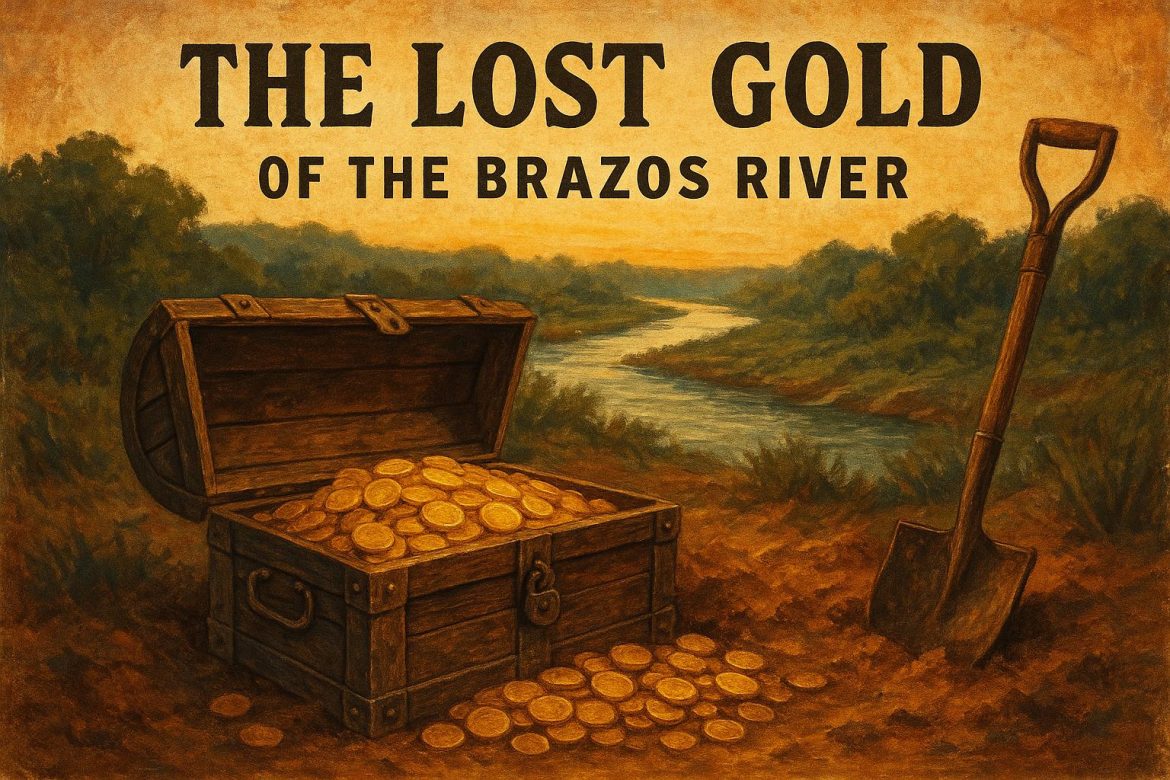The Legend of the Lost Gold of the Brazos River
The story of the lost gold of the Brazos River is a captivating tale that has intrigued treasure hunters and historians alike for generations. This legend, rooted in the rich history of Texas, suggests that there is a hidden stash of gold somewhere along the Brazos River, a major waterway that winds its way through the state.
Historical Context
The Brazos River runs approximately 1,280 miles from its source in New Mexico and travels southeast through Texas to the Gulf of Mexico. Throughout history, the river has served as a crucial lifeline for Texas, providing water, transportation, and sustenance for indigenous peoples, settlers, and modern communities. The river has witnessed countless historical events and the evolution of the land around it. Its banks have seen the rise and fall of various settlements, serving as both a barrier and a conduit for migration and trade.
The legend of the lost gold often points to the mid-19th century, a tumultuous period in Texas history. During this time, Texas was contending with the Mexican-American War and later the American Civil War. The environment of uncertainty and conflict fostered an atmosphere where tales of hidden treasures became prevalent. These legends were often linked to the movement of goods and currency made insecure by the instability of the times. As conflicts forced individuals and groups to hide their wealth to prevent it from falling into enemy hands, the story of the lost gold began to take shape.
The Tale of the Gold
The most popular version of the tale involves a band of outlaws or Confederate soldiers who, fearing imminent capture, allegedly buried a substantial amount of gold along the river’s banks. This specific scenario taps into the lore of the Civil War era, when Confederate soldiers, on the retreat and facing the threat of capture by Union forces, might have taken drastic measures to ensure their wealth was not seized. The exact location was kept secret and purportedly lost to time, as the individuals involved were either killed or never returned to retrieve their hidden fortunes. This element of lost knowledge adds a layer of intrigue, as it transforms what might be a simple act of concealment into a tantalizing mystery.
Attempts to Locate the Treasure
Over the years, many treasure hunters have attempted to unearth the fabled gold, employing a variety of methods ranging from rudimentary digging to advanced metal detection technology. The pursuit of this elusive treasure has become a passion for many, with individuals investing significant time and resources into the search. Some treasure hunters have adopted a scientific approach, using historical records and environmental surveys to guide their efforts. Others have engaged in more experimental methods, relying on folklore and oral histories to direct their exploration.
Researchers have engaged in archival exploration, seeking old maps and documents that might hint at the location of the treasure. Libraries and archives, both public and private, have seen an influx of individuals poring over records in search of clues. Despite these efforts, no credible evidence has emerged to verify the existence of the lost gold. Skeptics argue that the treasure is nothing more than a myth, a story spun from the imagination of early settlers and kept alive by subsequent generations. Nonetheless, the allure of this treasure continues to inspire adventurers to search the vast and often challenging terrain of the Brazos River.
The river and the lands surrounding it are rich in biodiversity, and treasure hunters must contend with natural obstacles ranging from dense vegetation to unpredictable wildlife. Those who venture into these areas often find themselves doing so as much for the thrill of exploration as for the potential reward of gold. In this way, the legend of the lost gold serves as a powerful motivator for the exploration of Texas’s natural beauty.
The Modern Legacy
Today, the story of the lost gold of the Brazos River persists more as a cultural and historical curiosity rather than a potential jackpot. Whether it’s mentioned in casual conversation or documented in local storytelling festivals, the legend continues to capture the imagination. It reflects a fascinating chapter in Texas history, capturing the imagination and prompting discussion on the mysteries that remain buried in the pages of time.
Moreover, the modern legacy of the legend has found a place in local businesses, with some establishments incorporating the tale into their branding and attractions. Souvenirs and memorabilia featuring motifs of the treasure can be found in gift shops, and themed tours of the river offer participants a chance to walk in the footsteps of past treasure hunters.
For those interested in delving deeper into Texas legends and historical accounts, consider exploring dedicated local history websites or visiting museums such as the Bullock Texas State History Museum, which offers insights into the state’s rich and diverse past. These resources provide context and depth to the tales, allowing people to appreciate how such legends fit within the broader scope of Texas’s vibrant history.
In sum, the legend of the lost gold of the Brazos River is more than just a story of hidden wealth. It is a narrative interwoven with the fabric of Texas’s past, highlighting the state’s tumultuous history and the human elements of hope, mystery, and adventure that continue to resonate through the ages.


